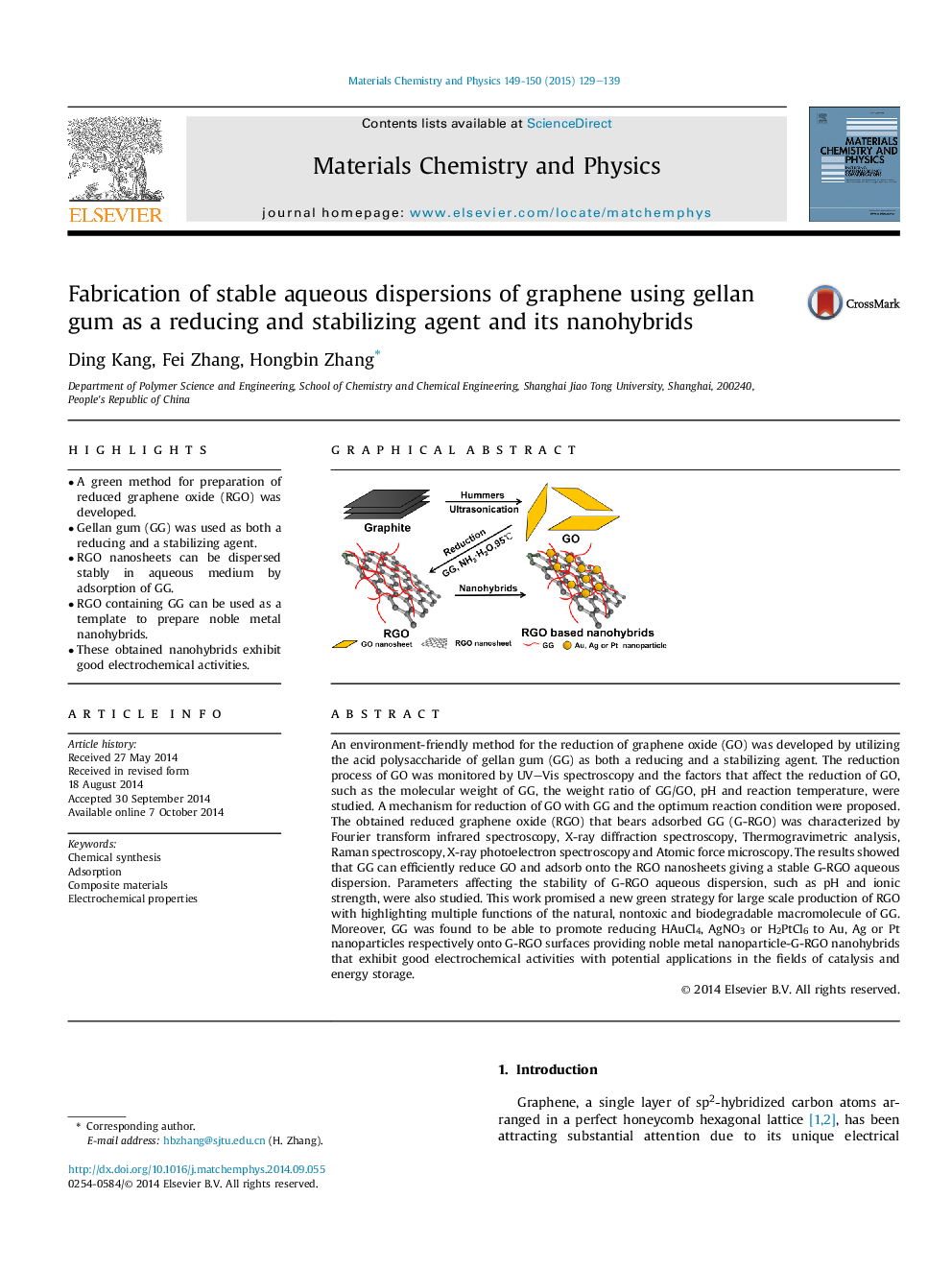| کد مقاله | کد نشریه | سال انتشار | مقاله انگلیسی | نسخه تمام متن |
|---|---|---|---|---|
| 1521396 | 1511813 | 2015 | 11 صفحه PDF | دانلود رایگان |
• A green method for preparation of reduced graphene oxide (RGO) was developed.
• Gellan gum (GG) was used as both a reducing and a stabilizing agent.
• RGO nanosheets can be dispersed stably in aqueous medium by adsorption of GG.
• RGO containing GG can be used as a template to prepare noble metal nanohybrids.
• These obtained nanohybrids exhibit good electrochemical activities.
An environment-friendly method for the reduction of graphene oxide (GO) was developed by utilizing the acid polysaccharide of gellan gum (GG) as both a reducing and a stabilizing agent. The reduction process of GO was monitored by UV–Vis spectroscopy and the factors that affect the reduction of GO, such as the molecular weight of GG, the weight ratio of GG/GO, pH and reaction temperature, were studied. A mechanism for reduction of GO with GG and the optimum reaction condition were proposed. The obtained reduced graphene oxide (RGO) that bears adsorbed GG (G-RGO) was characterized by Fourier transform infrared spectroscopy, X-ray diffraction spectroscopy, Thermogravimetric analysis, Raman spectroscopy, X-ray photoelectron spectroscopy and Atomic force microscopy. The results showed that GG can efficiently reduce GO and adsorb onto the RGO nanosheets giving a stable G-RGO aqueous dispersion. Parameters affecting the stability of G-RGO aqueous dispersion, such as pH and ionic strength, were also studied. This work promised a new green strategy for large scale production of RGO with highlighting multiple functions of the natural, nontoxic and biodegradable macromolecule of GG. Moreover, GG was found to be able to promote reducing HAuCl4, AgNO3 or H2PtCl6 to Au, Ag or Pt nanoparticles respectively onto G-RGO surfaces providing noble metal nanoparticle-G-RGO nanohybrids that exhibit good electrochemical activities with potential applications in the fields of catalysis and energy storage.
Figure optionsDownload as PowerPoint slide
Journal: Materials Chemistry and Physics - Volumes 149–150, 15 January 2015, Pages 129–139
